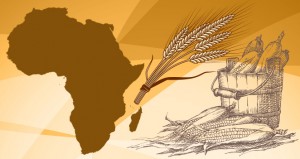
By B. Rose Huber, Woodrow Wilson School of Public and International Affairs
Throughout history, humans have responded to climate.
Take, for example, the Mayans, who, throughout the eighth and 10th centuries, were forced to move away from their major ceremonial centers after a series of multi-year droughts, bringing about agricultural expansion in Mesoamerica, and a clearing of forests. Much later, in the late 20th century, frequent droughts caused the people of Burkina Faso in West Africa to migrate from the dry north to the wetter south where they have transformed forests to croplands and cut the nation’s area of natural vegetation in half.
Such land transformations, while necessary to ensure future crop productivity, can themselves have large ecological impacts, but few studies have examined their effects. To that end, a Princeton University research team has created a model to evaluate how a human response to climate change may alter the agricultural utility of land. The study, featured in Conservation Biology, provides a readily transferable method for conservation planners trying to anticipate how agriculture will be affected by such adaptations.
“Humans can transform an ecosystem much more rapidly and completely than it can be altered by shifting temperature and precipitation patterns,” said Lyndon Estes, lead author and associate research scholar in the Woodrow Wilson School of International and Public Affairs. “This model provides an initial approach for understanding how agricultural land-use might shift under climate change, and therefore which currently natural areas might be converted to farming.”
Under the direction of faculty members Michael Oppenheimer and David Wilcove, both from the Wilson School’s Program in Science, Technology and Policy, and with the help of visiting student research collaborator Lydie-Line Paroz from ETH Zurich and colleagues from several other institutions, Estes studied South Africa, an area projected to be vulnerable to climate change where wheat and maize are the dominant crops.
Before determining how climate change could impact the crops, the team first needed to determine which areas have been or might be farmed for maize and wheat. They created a land-use model based on an area’s potential crop output and simulated how much of each crop was grown from 1979 to 1999 – the two decades for which historical weather data was available. They also calculated the ruggedness of each area of land, which is related to the cost of farming it. Taking all factors into account, the model provides an estimate of whether the land is likely to be profitable or unprofitable for farming.
To investigate any climate-change impacts, the team then examined the production of wheat and maize under 36 different climate-response scenarios. Many possible future climates were taken into account as well as how the crops might respond to rising levels of carbon dioxide. Based on their land-use model, the researchers calculated how the climate-induced productivity changes alter a land’s agricultural utility. In their analysis, they included only conservation lands – current nature reserves and those that South African conservation officials plan to acquire – that contained land suitable for growing one of the two crops either currently or in the future. However, Estes said the model could be adapted to assess whether land under other types of uses (besides conservation) are likely to be profitable or unprofitable for future farming.
They found that most conservation lands currently have low agricultural utility because of their rugged terrain, which makes them difficult to farm, and that they are likely to stay that way under future climate-change scenarios. The researchers did pinpoint several areas that could become more valuable for farming in the future, putting them at greater risk of conversion. However, some areas were predicted to decrease value for farming, which could make them easier to protect and conserve.
“While studying the direct response of species to climatic shifts is important, it’s only one piece of a complicated puzzle. A big part of that puzzle relates to how humans will react, and history suggests you don’t need much to trigger a change in the way land is used that has a fairly long-lasting impact. ” said Estes. “We hope that conservation planners can use this approach to start thinking about human climate change adaptation and how it will affect areas needing protection.”
Other researchers involved in the study include: Lydie-Line Paroz, Swiss Federal Institute of Technology; Bethany A. Bradley, University of Massachusetts; Jonathan Green, STEP; David G. Hole, Conservation International; Stephen Holness, Centre for African Conservation Ecology; and Guy Ziv, University of Leeds.
The work was funded by the Princeton Environmental Institute‘s Grand Challenges Program.
Estes LD, Paroz LL, Bradley BA, Green JM, Hole DG, Holness S, Ziv G, Oppenheimer MG, Wilcove DS. Using Changes in Agricultural Utility to Quantify Future Climate-Induced Risk to Conservation Conservation Biology (2013). First published online Dec. 26, 2013.

You must be logged in to post a comment.